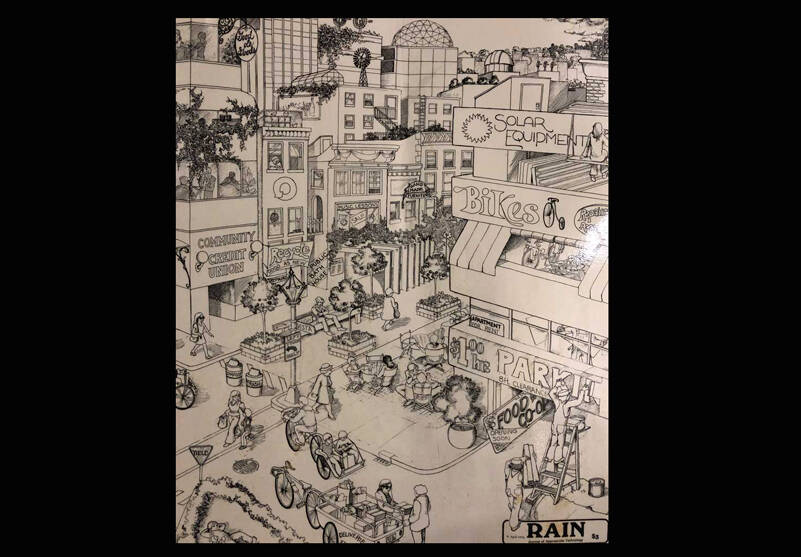By Morf Morford
Tacoma Daily Index
If you have any interest in instigating an inherently fractious conversation lately, just bring up zoning.
In just a couple years, zoning went from the ultimate snooze topic to the most explosive in decades – especially in established neighborhoods. And by “established” I mean long term home owners.
A home buyer purchases/invests in a neighborhood as much as an individual home.
It is a relatively fair assumption that, to some degree at least, the neighborhood one made a choice to settle in will not, within a reasonable time frame, change too drastically.
If you thought politics and religion were divisive, bring up zoning at your next neighborhood gathering.
Like most Americans, I have mixed feelings about zoning.
Neighborhood consistency – especially when it comes to historic areas – has its appeal. A cluster of Victorian, mid-century modern or bungalow homes is a destination for many who appreciate – or even obsess over – a particular architectural style or era.
But, perhaps like art, a similar school of design is appealing in small doses – conformity, as a dominant theme gets old quickly.
And home ownership cuts deep in the America mystique; a man’s home is his castle was the ruling mythology for years.
Besides the inherent gender bias, that simple phrase, when pushed to legal limits of construction (or remodeling) rarely held true.
We in America, take private property (and ownership) very seriously. In theory we presume that we can do anything we want with something that we own.
It’s not just HOA and covenants that restrict what we can do with our own homes. And perhaps like some nasty-tasting medicine, it is, we are told, for our own good. And sometimes it obviously is.
My wife and I like to tour homes when they have an open house. And I have been known to drop by estate sales. In both cases we have often toured homes that had unusual, and often unauthorized, additions – some were, ahem, on the creative side, others looked like amateurish if not emergency adaptations. Some were downright hazardous.
A few were even done out of spite – one home I know of was painted a vibrant, obnoxious color (bright purple, to be exact) just to annoy the neighbors.
A friend who lived near that house used it as a reference point (turn right at the ugly house). I got the feeling other neighbors did that as well
Some HOAs dictate home colors for their own reasons. Outside of covenants, most of us can paint our homes any color we like – and, most of the time, the vast majority of us pick a color scheme we can all live with.
Going for the “ugly” look is not something many of us pursue. But we could.
And if there is any guiding principle that Americans of every political or philosophical persuasion share, it is the simple idea that we don’t like being told what to do. And that sense is even deeper and more intense when it impacts us literally, where we live.
That’s the battle raging quietly (or not so quietly) in neighborhoods, living rooms and boardrooms across the country.
Slogans, as if on auto-fill, dominate conversations. I’m sure you’ve heard them or even hidden behind them.
You know them well, NIMBY, “affordable housing”, ADUs, “gentrification”, “density”, “sprawl”, “urban growth” and a dozen more.
Those terms emerge in conversations, pleas and legal documents, approaching the power of some strange incantation.
No one wants to be labelled. And few of us want to see the primary investment of our lives diminished. And no one want to be the “bad guy” in this debate.
Urban planners and visionaries of all stripes want to change regulations that prevent property owners from creating multiple-family housing in neighborhoods of single-family homes. This fight transcends, obscures or obliterates the traditional left-right ideological divides. It literally pits neighbor against neighbor. Middle-class communities and neighborhoods are going to court over threats of the loss of local control.
The free market collides with the American Dream
Single-family zoning protects property rights and neighborhood stability. Who could argue with that? But as always, “who benefits?” is the ultimate question.
Home-ownership is the ultimate manifestation of the American Dream – and certainly the core of the generational wealth that anchors our middle class.
Zoning laws and property rights regarding land use cannot be limited to certain areas. But they also don’t work well as “big picture” programs, as in state wide legislation. Either way, development will respond on the periphery of urban or suburban areas with stricter guidelines. In short, perpetual single-family zoning cannot be considered an implied right from the purchase of a home.
Allowing multiple dwellings on a lot would be a form of intentionally deregulating the housing market.
The only basis for a homeowner’s property right that maintains single-family use throughout a neighborhood would be through covenants, like the covenants, conditions and restrictions of HOAs or defined neighborhoods.
To put it mildly, community gains and losses from single-family enclaves or idealized (or vilified) urban villages are hard, if not impossible, to quantify.
More and more of us are convinced that zoning was a failed policy in practical terms, achieving neither stability nor prosperity and violating rights in the process.
Who is my neighbor?
Ideally, a neighborhood should be what the neighbors want it to be. The terms “stake-holders” emerges in these conversations. But who are the true “stake-holders”?
Homeowners? Their children? Future owners? Current or future neighbors? Hedge fund property investment companies?
In general, on most issues, my bias is toward as local control as possible.
A one-size-fits-all policy in any area rarely meets or anticipates the vagaries and oddities of human tastes or needs – but even less with something as essential and visceral as housing.
No wonder so many eyes glaze over when zoning comes up in conversation.





